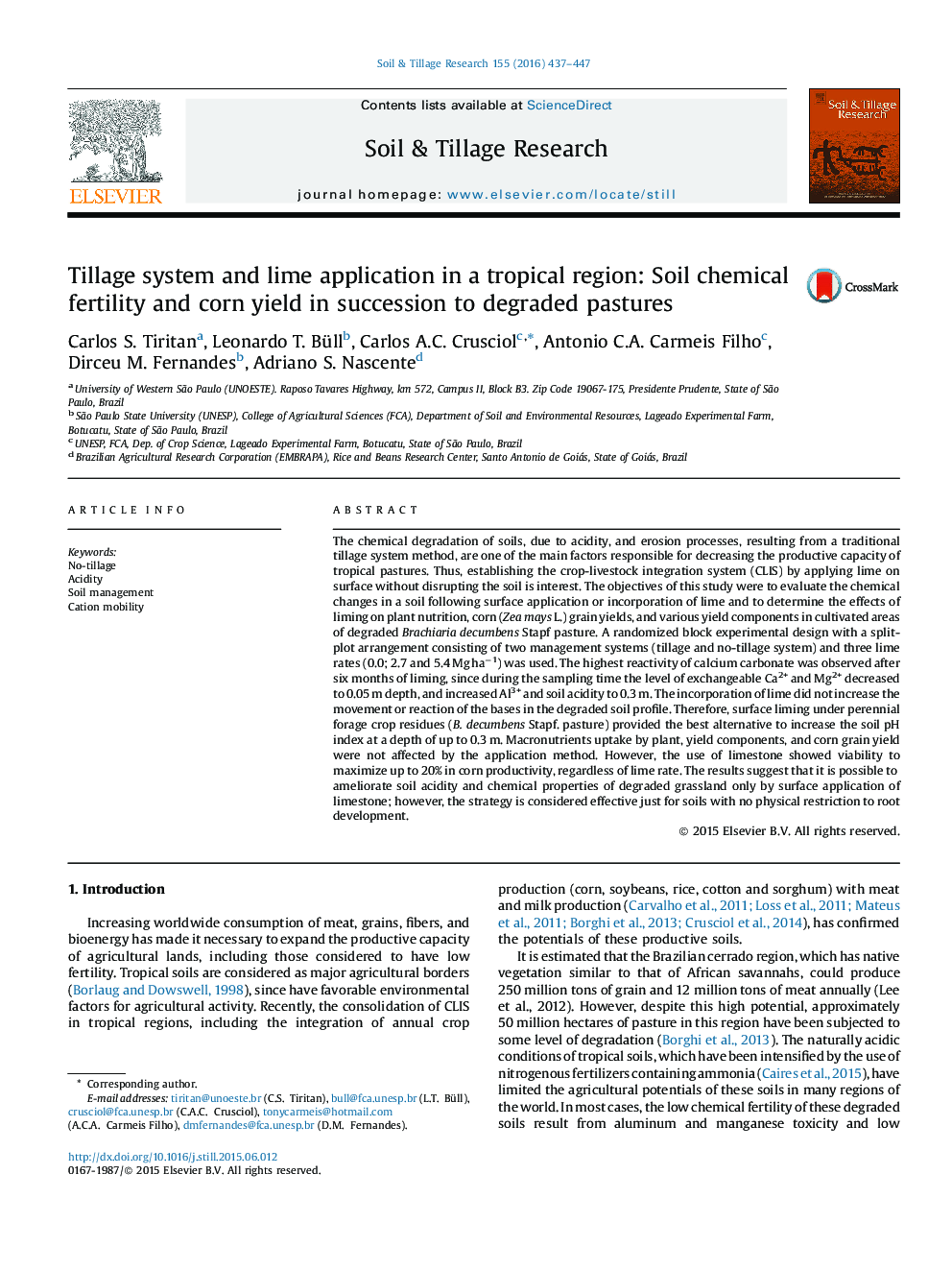| Article ID | Journal | Published Year | Pages | File Type |
|---|---|---|---|---|
| 305500 | Soil and Tillage Research | 2016 | 11 Pages |
•The surface lime application in degraded pasture provides similar results as those obtained with the incorporation of lime.•The incorporation of lime does not increase the speed of soil acidity amendment nor the depth of the soil profile amended.•Surface liming improves the chemical properties of the soil and corn grains productivity.•The absence of physical problems enables the practice of surface liming without soil tillage.
The chemical degradation of soils, due to acidity, and erosion processes, resulting from a traditional tillage system method, are one of the main factors responsible for decreasing the productive capacity of tropical pastures. Thus, establishing the crop-livestock integration system (CLIS) by applying lime on surface without disrupting the soil is interest. The objectives of this study were to evaluate the chemical changes in a soil following surface application or incorporation of lime and to determine the effects of liming on plant nutrition, corn (Zea mays L.) grain yields, and various yield components in cultivated areas of degraded Brachiaria decumbens Stapf pasture. A randomized block experimental design with a split-plot arrangement consisting of two management systems (tillage and no-tillage system) and three lime rates (0.0; 2.7 and 5.4 Mg ha−1) was used. The highest reactivity of calcium carbonate was observed after six months of liming, since during the sampling time the level of exchangeable Ca2+ and Mg2+ decreased to 0.05 m depth, and increased Al3+ and soil acidity to 0.3 m. The incorporation of lime did not increase the movement or reaction of the bases in the degraded soil profile. Therefore, surface liming under perennial forage crop residues (B. decumbens Stapf. pasture) provided the best alternative to increase the soil pH index at a depth of up to 0.3 m. Macronutrients uptake by plant, yield components, and corn grain yield were not affected by the application method. However, the use of limestone showed viability to maximize up to 20% in corn productivity, regardless of lime rate. The results suggest that it is possible to ameliorate soil acidity and chemical properties of degraded grassland only by surface application of limestone; however, the strategy is considered effective just for soils with no physical restriction to root development.
